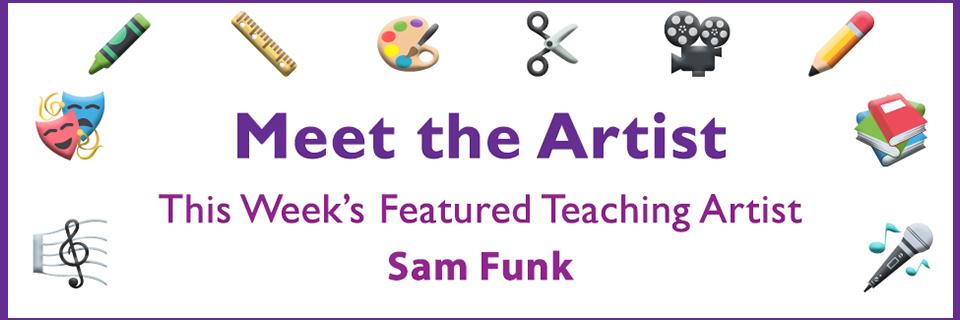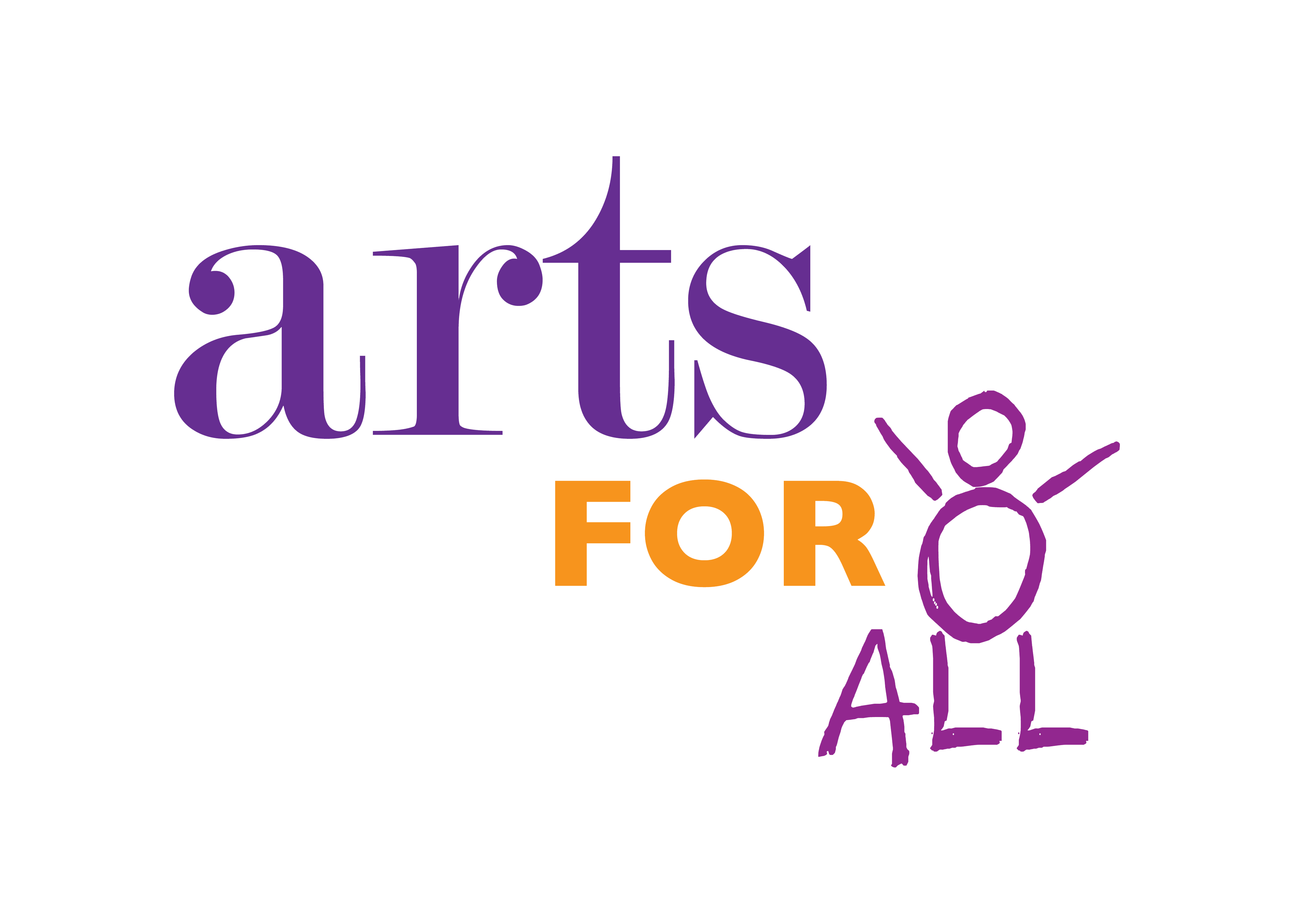
Interview by AFA Intern Mackenzie Timbrell in Spring of 2024
Q: Who are you?
Sam: My name is Sam. I am a multi-disciplinary artist, arts educator, actor, and teacher. I am a person who believes in the power of theater and the aesthetics of theater as its own form of pedagogy in and of itself. I am also currently a graduate student.
Q: How did you first get involved in theater?
Sam: I started theater as a young person. I was involved in a community theater, and then in high school, I worked on a variety of shows. My high school didn’t really have a booming theater program, so it wasn’t a very transformative experience, but it was interesting to be a part of. I left high school feeling like I wanted to explore theater more and decided to major in it for my undergraduate degree. I was recently talking with a peer about how growing up in theater as a plus-size person fast-tracked me to use theater for healing purposes. I was harmed a lot by the structure of traditional theater as a young person by being typecast into roles like the villain, and when I got to higher education, I realized that I was never given the opportunity to play bigger or main roles. As an educator, I think about myself and the intersectional aspects of my identity when I enter a space and all the work that needs to be done to uplift all the marginalities within that space. In a way, the form of theater was compelling to me as a young person, as was the human aspect of what theater can provide people with.
Q: How do the children you work with inspire you to continue being a teaching artist?
Sam: I work with some really wonderful young people right now at Renaissance Charter School in Elmhurst. I have been working with another teaching artist, Brynne, who has shepherded me into this specific work with learning literacy through the arts. It has been a fabulous experience so far to work with the students, and they are so excited whenever we come into the classroom. I think any opportunity to advance educational goals and the arts is something that has always been really fun for me, so watching the kids interact with the programming has been great.
Q: What is one of the main takeaways you hope the students gain from your classes?
Sam: I think the most important thing is that they have fun! My professor sometimes calls it “serious fun,” where you are playing no matter what you are doing, but the content and meaning of the work are serious and important. Both that we have shared joy and that we also have a purpose for why we are doing this work would be wonderful for the kids to walk away with.
Q: What drew you to Arts For All? What are some of the projects you have been working on with students so far?
Sam: was looking into Arts For All before I had even moved to New York! I moved in 2022, and I was looking at teaching artist work and considering how to expand my practice out of the classroom full time while implementing the arts. Arts For All was one of the first organizations that really jumped out to me. I taught a lot of applied art when I was a preschool teacher, and I liked that it was kind of nebulous in the way that the literacy of the arts program allowed me to flex all those muscles and put my best foot forward in that way. It has been a great experience so far. Yesterday, Brynne facilitated a Where the Wild Things Are craft where we made little Wild Thing puppets. Next week, we are going to use scripts that the kids made to perform puppet shows.
Q: Do you have any favorite in-classroom moments working with students?
Sam: I have connected a lot with the Spanish-speaking students at the school because I am the only Spanish-speaking teacher in the classroom besides their regular teachers. I have been able to help them translate a lot of their responses to questions and prompts for assignments. I think this has helped the students feel more included in the projects. I always appreciate opportunities to use that skill, and I think it is nice to connect with students on that level as well.
Q: What does art mean to you?
Sam: Brynne starts every session with a call and response where they say, “I am an artist!” and then, “Everybody is an artist!” I always appreciate that because it is such a big affirmation for young people. I fully believe this mantra for myself too. Every person alive is an artist, even if they don’t have a practice, and there is such a wide range of entry points. It really reminded me of how important art was during the pandemic, when museums were offering free access passes to the public. Art is such a part of our humanity, and it is what makes us feel. At the core of who we are, we need art to survive, and art is the one thing that touches everyone at the core.
